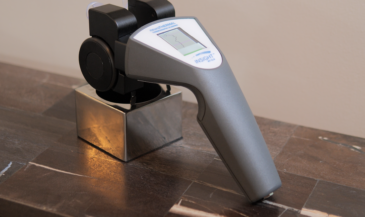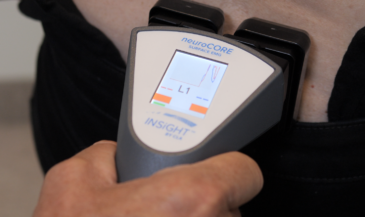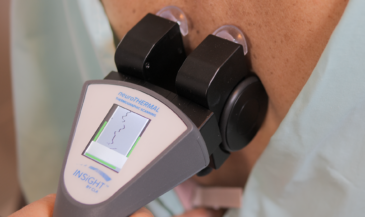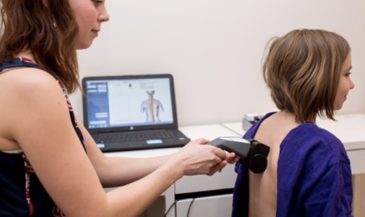Chiropractic table talk is an essential part of patient engagement, helping practitioners build trust, educate patients, and foster long-term loyalty. Effective communication during chiropractic visits goes beyond adjusting techniques; it involves engaging patients in conversations that empower them to take an active role in their health journey. When done right, table talk can significantly impact patient retention, practice growth, and overall wellness outcomes.
Chiropractors who prioritize patient-centered communication can transform everyday interactions into meaningful experiences that inspire patients to stay committed to their care plans. This article explores strategies for mastering table talk to improve chiropractic patient engagement, retention, and overall satisfaction.
Understanding the Importance of Table Talk in Chiropractic
Chiropractic table talk refers to the conversations that occur during a patient’s visit, typically while they are on the adjusting table. These interactions provide an opportunity for chiropractors to engage with patients, address their concerns, and explain the benefits of ongoing care. Table talk goes beyond answering questions; it’s about using communication to create a connection that enhances the patient’s experience.
How Table Talk Impacts Patient Engagement
Engaging patients in meaningful conversations can significantly improve their understanding of chiropractic care. When patients feel informed and involved, they are more likely to stay committed to their care plans and recommend chiropractic services to others. This engagement fosters a sense of partnership, where patients see themselves as active participants in their health journey.
The Role of Table Talk in Patient Retention
Effective table talk helps patients understand the value of their care and encourages them to continue with their recommended treatment plans. By consistently communicating the benefits of chiropractic adjustments and addressing any concerns, chiropractors can enhance patient retention and reduce the likelihood of dropouts. Retaining patients not only improves outcomes but also contributes to the steady growth of the practice.
Strategies for Effective Chiropractic Table Talk
To master table talk, chiropractors need to develop communication techniques that resonate with patients and encourage ongoing engagement. The following strategies can help practitioners conduct effective conversations that lead to improved patient satisfaction and retention.
Reframe the Conversation to Focus on Wellness
Shift the dialogue from symptom relief to long-term wellness. Instead of solely addressing pain, discuss how chiropractic care supports the nervous system and promotes overall health. Use phrases like “Get Better, Stay Well, Feel Alive!” to emphasize the benefits of a proactive approach to wellness, rather than just symptom management.
Practice Present Time Consciousness (PTC)
Present Time Consciousness involves being fully present with the patient during each interaction. Make eye contact, listen actively, and eliminate distractions to show patients that their concerns are important to you. PTC not only enhances the quality of communication but also builds trust, as patients feel that their chiropractor is genuinely invested in their well-being.
Use Objective Measures to Support Your Conversations
Incorporating objective data, such as findings from INSiGHT scanning technology or the CORESCORE, into table talk can help validate your recommendations. Objective measures provide concrete evidence of a patient’s progress, making it easier for them to understand the significance of their care. This approach reinforces the value of chiropractic adjustments and encourages continued commitment.
Building Trust Through Patient-Centered Communication
Trust is a crucial component of any healthcare relationship, and it is built through consistent, patient-centered communication. When patients feel heard and respected, they are more likely to trust their chiropractor’s recommendations and adhere to their care plans.
Techniques for Establishing Trust During Table Talk
Start each session by asking, “What’s different today?” This question invites patients to share their experiences and shifts the focus away from symptoms, allowing you to guide the conversation toward positive changes and progress. Acknowledge any concerns and use language that empowers patients, such as explaining how their nervous system is healing and adapting.
Showing Empathy and Understanding
Acknowledge the patient’s feelings and experiences by responding with empathy. For example, if a patient expresses concern about ongoing discomfort, reassure them that healing is a process, and explain how their care plan addresses both immediate and long-term goals. This approach helps patients feel understood and confident in their journey to better health.
Educating Patients on the Benefits of Chiropractic Care
Table talk offers an opportunity to educate patients about the broader benefits of chiropractic care. By sharing insights on how spinal adjustments support the nervous system and contribute to overall wellness, chiropractors can help patients see the value of continuing their care beyond symptom relief.
Using Table Talk to Explain Chiropractic Principles
Educate patients on the connection between spinal health and nervous system function. Use simple analogies to explain complex concepts, such as describing the nervous system as the body’s communication network. The more patients understand the role of chiropractic in their health, the more likely they are to stay engaged in their care plans.
Addressing Common Misconceptions
Use table talk to dispel common misconceptions about chiropractic care, such as the idea that it is only for back pain. Explain that chiropractic adjustments help optimize the body’s ability to adapt and function, leading to improvements in energy levels, sleep quality, and stress management. Addressing these misconceptions can broaden patients’ perception of chiropractic and encourage them to seek care for overall wellness.
Enhancing Patient Engagement for Better Retention
Patient engagement is directly linked to retention. When patients are actively involved in their health journey, they are more likely to follow through with their care plans and recommend chiropractic services to others.
Encouraging Patients to Take an Active Role
Empower patients to take an active role in their health by providing them with resources such as exercises, lifestyle recommendations, or wellness tips that complement their chiropractic care. Discuss how making small changes, like improving posture or reducing stress, can enhance the benefits of their adjustments.
Regularly Review Progress with Patients
Incorporate progress reviews into table talk by sharing objective data from tools like the CORESCORE. Regularly updating patients on their progress helps them stay motivated and reinforces the importance of ongoing care. This approach also allows for adjustments to the care plan based on the patient’s evolving needs.
Using Table Talk to Drive Practice Growth
Mastering table talk can contribute to practice growth by improving patient retention, increasing referrals, and boosting patient satisfaction. When patients feel engaged and see the benefits of their care, they are more likely to share their positive experiences with others.
The Role of Word-of-Mouth Referrals
Satisfied patients who feel connected to their chiropractor often refer family and friends, leading to organic growth for the practice. Use table talk to encourage patients to share their experiences, such as asking them if they know someone who could benefit from chiropractic care.
Promoting Wellness Programs or Family Care Packages
Table talk can also be used to promote additional services, such as wellness programs or family care packages. Explain how ongoing chiropractic care can benefit the whole family and support long-term health. Providing options for extended care encourages patients to view chiropractic as an integral part of their wellness routine.
Fostering Patient Loyalty Through Personalized Care
Patient loyalty is cultivated through personalized care that addresses each individual’s unique needs. When patients feel that their care plan is tailored specifically for them, they are more likely to remain loyal to the practice.
Personalizing Table Talk for Each Patient
Tailor your conversations based on the patient’s specific health goals, preferences, and progress. Use their scan results, CORESCORE data, or personal experiences to make the discussion relevant to their situation. Personalization shows patients that you are invested in their unique health journey.
Recognizing and Celebrating Milestones
Celebrate patient milestones, such as improvements in their CORESCORE or reaching a certain number of visits. Acknowledge their commitment to their health, and use this as an opportunity to discuss the next steps in their wellness journey. Recognizing achievements fosters a sense of accomplishment and encourages continued dedication.
Implementing Chiropractic Wellness Strategies to Support Long-Term Health
Chiropractic care should be viewed as a long-term wellness strategy rather than a short-term solution for pain. Implementing wellness strategies during table talk helps patients understand the ongoing benefits of chiropractic and encourages them to continue their care.
Educating Patients on the Importance of Maintenance Care
Use table talk to explain the concept of maintenance care and how regular adjustments can help prevent future issues. Discuss how ongoing chiropractic care supports the nervous system and enhances the body’s ability to adapt to everyday stressors, promoting long-term wellness.
Promoting a Holistic Approach to Health
Encourage patients to adopt a holistic approach to health that includes not only chiropractic adjustments but also other wellness practices like exercise, nutrition, and stress management. This integrated approach helps patients achieve optimal health and positions chiropractic care as a vital component of their wellness routine.
Unlock Your Practice’s Potential with Masterful Table Talk
Effective chiropractic table talk can be a game-changer for your practice, leading to improved patient engagement, retention, and satisfaction. By prioritizing patient-centered communication, educating patients, and addressing their individual needs, you create a supportive environment that fosters loyalty and growth.
Empower your patients to take charge of their health by making every conversation count. Use table talk as a tool to enhance their understanding of chiropractic care and inspire them to commit to their wellness journey.
Take the Next Step to Enhance Your Practice
Are you ready to elevate your chiropractic practice by mastering table talk? Discover how tools like INSiGHT scanning technology and the CORESCORE can help you improve communication and patient engagement.
Book a call with an INSiGHT Advisor today to learn how integrating these advanced tools can transform your patient interactions and take your practice to the next level. Start fostering stronger relationships and driving growth through effective chiropractic communication.

























































































































































